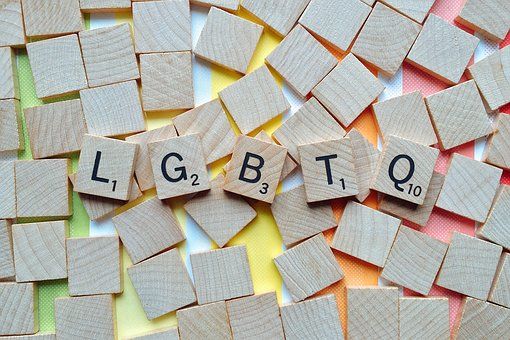Looking At Bollywood Through A Queer Lens (Part-2)
Jun 11, 2019 • 11 views
Hindi cinema is one of the most accessible forms of art and therefore holds the power to mould the thinking and attitude of the masses. It, therefore, comes as a surprise that it has not provided an adequate platform for showcasing homosexuality in a more realistic light. Homosexual characters in almost all movies are shown in a clichéd role- with “effeminate” characteristics, dressed in loud clothes, making double-meaning jokes or obscene gestures (Example-Abhishek Bachchan’s role as the gay twin brother in Bol Bacchan,2012). They, in turn, become the receiving end of homophobic comments and crude humour. The character is generally shunned by the others and is shown as someone who cannot lead a simple, everyday life. Nevertheless, there have been some movies which have strived to shed light on the plight of these sexual minorities by exhibiting the problems and dilemmas faced by the community away from the ridicule-worthy image portrayed. These include-My Brother Nikhil (2005), I Am (2011), Aligarh (2016) and Kapoor and Sons (2016).

Presented below is an analysis of two movies which had a gay-centric theme in order to understand how movies engage in the representation of Homosexuality- Dostana (2008 )and Straight (2009)
Dostana is the story of two men who pretend to be homosexual in order to share an apartment with a girl who is reluctant to share it with men. Both end up vying with each other for her. Straight is about a man who is torn between the question of whether he is gay or not. Dostana follows the footsteps of the traditional usage of sexuality for the purpose of comedy. At the same time, it seems to have taken inspiration from the early 1900’s Bollywood norm of a female character coming between two males . .
Straight can be called a bold probation into a man’s dilemma of whether he is gay or not since he is shown to have feelings for both a woman and a man. With such a concept the film gave a brave and refreshing treatment to homosexuality. However, the movie ends up endorsing heterosexuality in a complete injustice to the idea of homosexual relationship which it had portrayed in such a positive light. It appears that the movie was based on the basic ideology which believes in “affirmation of heterosexual alliances no matter how strong the temptation of homosexual desire.”[1] Thus, the Hindi cinema culture still appears confused concerning forming a universal opinion about projecting homosexual characters as well as giving full justice to a homosexual story.
It has been analysed that the whole notion of Heteronormativity in India prevails with the major objective of suppressing homosexuality. However, even in this area, it is the heteronormative “patriarchy” which has the upper-hand. While it has been argued time and again that female actors do not get to play a role of substance and are only cast to add glamour to films. Even when it comes to movies on same-sex relationships, we see a dearth of those revolving around females or. Whether as comic relief or in a serious role, the films at least talk about gay relations while completing ignoring the existence of a similar bond between females. This has led to the creation of a patriarchal coding and absence of a stage for voicing the lesbian cause. Two notable films which have dealt with this subject are Deepa Mehta ‘s Fire (1996) and Karan Razdan’s Girlfriend (2004). Fire depicts the story of two sisters-in-law who face similar problems with their respective spouses, find comfort in each other and form a bond. However, the film also painted a negative angle in the sense that since the two women enter into a relationship due to the failure of their respective marriages, it indicated that homosexual relationships are the outcome of failed heterosexual ones.
From being featured as cross-dressers in song sequences to a comic supporting role and finally as the main character, the representation of the LGBT community has definitely evolved over the years. However, since the issues of gender and sexuality remain burning questions, the Hindi cinema is charged with the duty of delineating the community in a compassionate, coherent and empathetic manner. Hindi cinema has the ability to provide a platform for interaction among people on gender and sexual identities. It is only when mainstream Hindi movies bring out the theme in an authentic and realistic way by fighting off homophobia that the true empowerment of these sexual minorities can take place. Otherwise, LGBT people would find it difficult to come out and would continue to lead a closeted life while others would continue to have a closeted mindset. A very few people are aware that the acronym LGBT has been shortened from LGBTTQQIIA+ which stands for lesbian, gay, bisexual, transsexual, transgender, queer, questioning, intersex, intergender and asexual. This merely shows how enigmatic the concept of sexuality is and thus, we as well as filmmakers still have to go a long way before these unknown, untouched and unseen realities are brought to the reel life.

[1] ‘Gaylords’ of Bollywood: Politics of desire in Hindi Cinema. Rama Srinivasan pg. 74
